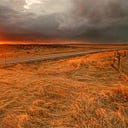SEEING WITH NEW UNDERSTANDING
A genre of books has developed that is about the reframing and reinterpretation of history. They tend to be vast continental stories that include populations not considered before in English writing but who have extensive archives in their own languages. English writing has been a matter of facts and the opinions and benefits of the English, so that writing derived from one of the many languages in India or from Spanish Muslim sources or from a place in China can be as revelatory as sci-fi.
Now that there is body of thought about “the extended mind” meaning something like “group think” so that a person accepts the assumptions of the community which can amount to a culture, along with knowledge about human development that comes from trading, trade routes, and how hunger for resources develops. It’s easy to understand why people want gunpowder or even coffee but why pepper and tulip bulbs? Add to this complex our extending knowledge of ecosystems, particularly those being swept by change as the planet shifts.
Much of the nature of Montana is attached to the history of the tribes and the timing and nature of their reservations, which created a body of seven political units that still haven’t quite settled down.
Consider the Flathead Valley which was peopled by a different sort of genetic and working style, adapted to a place that was wet and mild enough for some farming. When the white traders and missionaries came, they had a much easier time and prospered more than they did on the east slopes. https://csktribes.org/history-and-culture When the question of reservations came up, the whites used the strategy of combining competing tribes together but also had the idea in 1855 of a checkerboard, interspersing Indian lands with white lands. This allotment plan made it easier for whites to acquire land, but also was a force for drawing together different tribal styles. Part were “fish Indians” based on salmon; part were plateau people, hunter/gatherers; and part tried to include buffalo.
Hugh Dempsey tells a story about how the Flathead people would occasionally crave buffalo after their population had diminished the supply in their own land. They would send a brave emissary to find a Blackfeet east-side camp and sit in a high place where he could be seen. If they were a People in a good place with enough to live on, they might invite him down to smoke and discuss. If not, they simply shot him. One could say cynically that today politics are much the same.
On the east side the whites captured water from the river emerging from what became Glacier Park and rerouted it through canals and flumes so that it stayed on the US side along the 49th parallel that was the border. This made it possible for the development of small towns along the “High Line” of the Great Northern railroad so that it could justify its existence. Today the railroad has lost interest and the waterway is collapsing from neglect. The political forces on the side of the small towns are not strong and the villages are dying.
On the Canadian side, the Blackfeet bumped into the Cree who interwove with the white Hudson’s Bay fur trappers to create the Metis, now recognized as a tribe in Canada.
This is from the recommended 3rd grade social studies curriculum in Montana. https://opi.mt.gov/Portals/182/Page%20Files/Indian%20Education/Social%20Studies/3-5/Seven%20Reservations%20-%20G3.pdf The whole document is interesting and includes land patterns, as well as stunning photos.
“There are 12 Montana Indian tribes. They are Crow, Northern Cheyenne, Sioux, Gros Ventre, Assiniboine, Chippewa, Cree, Blackfeet, Salish, Kootenai, Pend d’Oreille, and Little Shell Chippewa.
• There are seven Indian reservations in Montana; Crow, Northern Cheyenne, Fort Peck, Fort Belknap, Rocky Boy’s, Blackfeet, Flathead. (
• The Little Shell Chippewa do not have a reservation.
(This is out-dated. Now they do have a reservation at last. Some might be called Metis, near-white.)
People in Montana tend to call them as nicknames the names of their capitals: https://opi.mt.gov/Portals/182/Page%20Files/Indian%20Education/Indian%20Education%20101/Montana%20Indians%20Their%20History%20and%20Location.pdf
Crow Billings or Hardin
Northern Cheyenne Busby or Lame Deer
Fort Peck Poplar or Wolf Point
Fort Belknap Havre
Rocky Boy’s Box Elder or Big Sandy
Blackfeet Browning
Flathead Kalispell or St. Ignatius
Little Shell Chippewa Great Falls
These “town” names are based on experience rather than politics. They are where people shop, go to school, get medical care. The references are used among people who know the places rather than history or maps. From this point of view the state looks quite different and the nature of the terrain, whether badlands or riverine, can be entirely different but the nature of the towns tend to be similar: same main street, false front small stores, few clusters of prosperous houses. Not much difference between rez and white because the economic bases are about the same. Only after considerable familiarity does the foundational culture begin to rub through the conventions of fast food, big box stores, proud churches, corny PR, and limited infrastructure.
I only know Browning and I never knew, will never know, what Earl Old Person knew. What I bring is theory and sometimes recognition. Families are what count here, both in tribal contexts and homesteader claims. This knowledge is best captured in fiction, but stories and histories share the same genre or re-interpretation.
